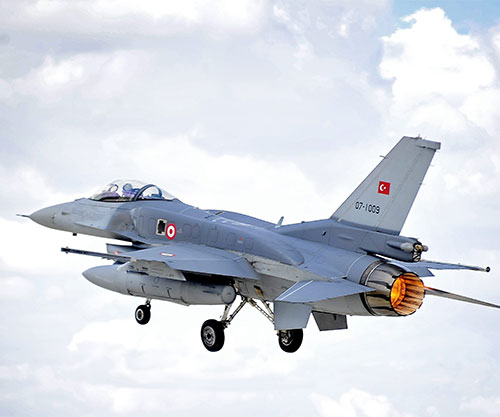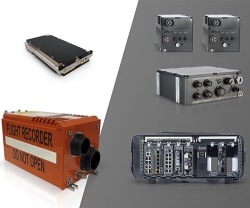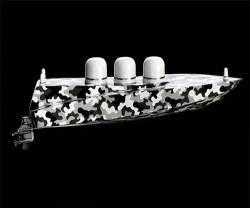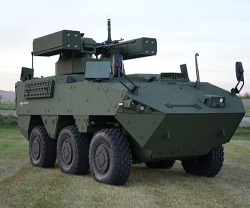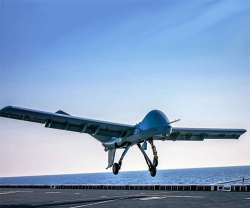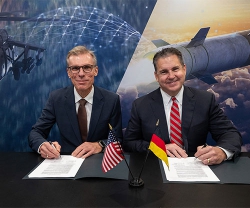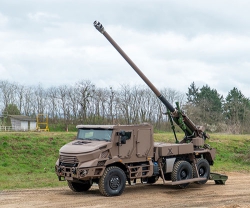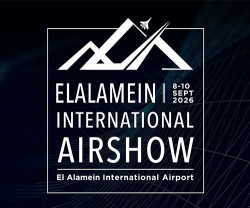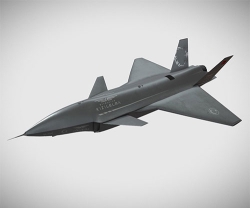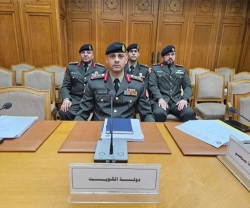The U.S. State Department has made a determination approving a possible Foreign Military Sale to the Republic of Türkiye of F-16 Aircraft Acquisition and Modernization and related equipment for an estimated cost of $23.0 billion.
The Defense Security Cooperation Agency (DSCA) delivered the required certification notifying Congress of this possible sale on Friday 26 January 2024.
The Republic of Türkiye has requested to buy 40 new F-16 aircraft and to modernize 79 existing F-16 aircraft to V-Configuration. The request includes: thirty-two (32) F-16 C Block 70 aircraft; eight (8) F-16 D Block 70 aircraft; forty-eight (48) F110-GE-129D engines (40 installed, 8 spares); one hundred forty-nine (149) Improved Programmable Display Generators (iPDG) (40 installed, 10 spares, 99 for modernization program (79 installed, 20 spares)); one hundred forty-nine (149) AN/APG-83 Active Electronically Scanned Array (AESA) Scalable Agile Beam Radars (SABR) (40 installed, 10 spares, 99 for modernization program (79 installed, 20 spares)); one hundred sixty-nine (169) Modular Mission Computers (MMC) 7000AHC (or available mission computer) (40 installed, 10 spares, 119 for modernization program (79 installed, 40 spares)); one hundred fifty nine (159) Embedded Global Positioning System (GPS) Inertial Navigation Systems (INS) (EGI) with Selective Availability Anti-Spoofing Module (SAASM) or M-Code capability and Precise Positioning Service (PPS) (40 installed, 8 spares, 111 for modernization program (79 installed, 32 spares)); one hundred sixty-eight (168) Integrated Viper Electronic Warfare Suite (IVEWS) or equivalent Electronic Warfare (EW) systems (40 installed, 10 spares, 118 for modernization program (79 installed, 39 spares)); eight hundred fifty-eight (858) LAU-129 guided missile launchers; forty-four (44) M61 Vulcan cannons (40 installed, 4 spares); sixteen (16) AN/AAQ-33 Sniper Advanced Targeting Pods (ATP); one hundred fifty-one (151) Multifunctional Information Distribution System-Joint Tactical Radio Systems (MIDS-JTRS) (40 installed and 4 ground terminals, 8 spares, and 99 for modernization program (79 installed and 4 ground terminals, 16 spares)); nine hundred fifty-two (952) Advanced Medium Range Air-to-Air Missiles (AMRAAM) AIM-120C-8 or equivalent missiles; ninety six (96) AMRAAM guidance sections; eight hundred sixty-four (864) GBU-39/B Small Diameter Bombs Increment 1 (SDB-1); two (2) GBU-39(T-1)/B SDB-1 guided test vehicles; two (2) GBU-39(T-1)/B SDB-1 practice bombs; ninety-six (96) AGM-88B High-Speed Anti-Radiation Missiles (HARM); ninety-six (96) AGM-88E Advanced Anti-Radiation Guided Missiles (AARGM); ten (10) AARGM Captive Air Training Missiles (CATM); eleven (11) AARGM control sections; twelve (12) AARGM guidance sections; four hundred one (401) AIM-9X Block II Sidewinder missiles; twelve (12) AIM-9X Block II Sidewinder Captive Air Training Missiles (CATMs); forty (40) AIM-9X Block II Sidewinder tactical guidance units; twelve (12) AIM-9X Block II Sidewinder CATM guidance units; twelve (12) MK82 Inert Filled general purpose bombs; eight hundred fifty (850) Joint Direct Attack Munition (JDAM) KMU-556 tail kits for GBU-31; two hundred (200) JDAM KMU-557 tail kits for GBU-31v3; three hundred eighty-four (384) JDAM KMU-559 tail kits for GBU-32; three (3) JDAM KMU-572 tail kits for GBU-38 or Laser JDAM GBU-54; one thousand fifty (1,050) FMU-152 fuzes. Also included are AMRAAM CATMs; AIM-9X Sidewinder training missiles and Active Optical Target Detectors (AOTD); HARM control sections, rocket motors, and warhead spares; FMU-139 Joint Programmable Fuzes; DSU-38 Laser Guidance Sets for GBU-54; missile containers; AN/ARC-238 radios; AN/APX-127 or equivalent Advanced Identification Friend or Foe (AIFF) Combined Interrogator Transponders (CIT) with mode 5; Joint Helmet Mounted Cueing Systems (JHMCS) II or Scorpion Hybrid Optical-based Inertial Tracker (HObIT) helmet mounted displays; Infrared Search and Track (IRST) pods; AN/ALE-47 Countermeasure Dispenser Systems (CMDS); KY-58 and KIV-78 cryptographic devices; Simple Key Loaders (SKLs); additional secure communications, precision navigation, and cryptographic equipment; Flight Mission Planning Systems (FMPS); Remote Operated Video Enhanced Receivers (ROVER) 6i/6Sis; Tactical Network ROVER kits, and STINGER Multi Bi-Directional (MBI) antennas; SNIPER pod pylons; impulse cartridges, chaff, flares, and ammunition; bomb components and Common Munitions Built-in-Test Reprogramming Equipment (CMBRE); Rackmount Improved Avionics Intermediate Shop (RIAIS); Cartridge Actuated Devices/Propellant Actuated Devices (CAD/PAD); Triple Missile Launcher Adapters (TMLA); aircraft, avionics, and weapons integration, test support, and equipment; major modernization upgrade kits for F-16 Block 40 and Block 50+ aircraft and Service Life Extension Program (SLEP) modifications; aircraft and engine repair and refurbishment after maintenance; engine and aircraft spare and repair parts, consumables, and accessories and repair and return support; aircraft, engine, ground, and pilot support equipment; Classified/Unclassified Computer Program Identification Number (CPIN) systems; electronic warfare database support; pylons, launcher adaptors, weapon interfaces, bomb and ejection racks, conformal fuel tanks, and travel pods; precision measurement equipment laboratory and calibration support; Classified/Unclassified software and software support; Classified/Unclassified publications, manuals, and technical documentation; maps and mapping data; facilities and construction support; simulators and training devices; personnel training and training equipment; U.S. Government and contractor engineering, technical and logistics support services, studies and surveys; and other related elements of logistical and program support. The estimated total cost is $23.0 billion.
This proposed sale will support the foreign policy goals and national security of the United States by improving the air capabilities and interoperability of a North Atlantic Treaty Organization (NATO) Ally that is a force for political and economic stability in Europe.
The proposed sale will allow Türkiye to expand and modernize its fleet of F-16 aircraft as older F-16 aircraft approach the end of their service life. These new and refurbished aircraft will provide Türkiye with a fleet of modernized multi-role combat aircraft to enable it to provide for the defense of its airspace, contribute to NATO missions to preserve regional security and defend NATO Allies, and maintain interoperability with U.S. and NATO forces. Türkiye has F-16 aircraft in its inventory and will have no difficulty absorbing these aircraft and services into its armed forces.
The proposed sale of this equipment and support will not alter the basic military balance in the region.
The principal contractor will be Lockheed Martin, Greenville, South Carolina. The purchaser typically requests offsets. Any offset agreement will be defined in negotiations between the purchaser and the contractor.
Implementation of this proposed sale will not require the assignment of any additional U.S. Government or contractor representatives to Türkiye.
There will be no adverse impact on U.S. defense readiness as a result of this proposed sale. The description and dollar value are for the highest estimated quantity and dollar value based on initial requirements. Actual dollar value will be lower depending on final requirements, budget authority, and signed sales agreement(s), if and when concluded.
Source: Defense Security Cooperation Agency (DSCA); File Photo: An F-16 Fighting Falcon of the Turkish Air Force; Photo © Turkish Ministry of Defense

